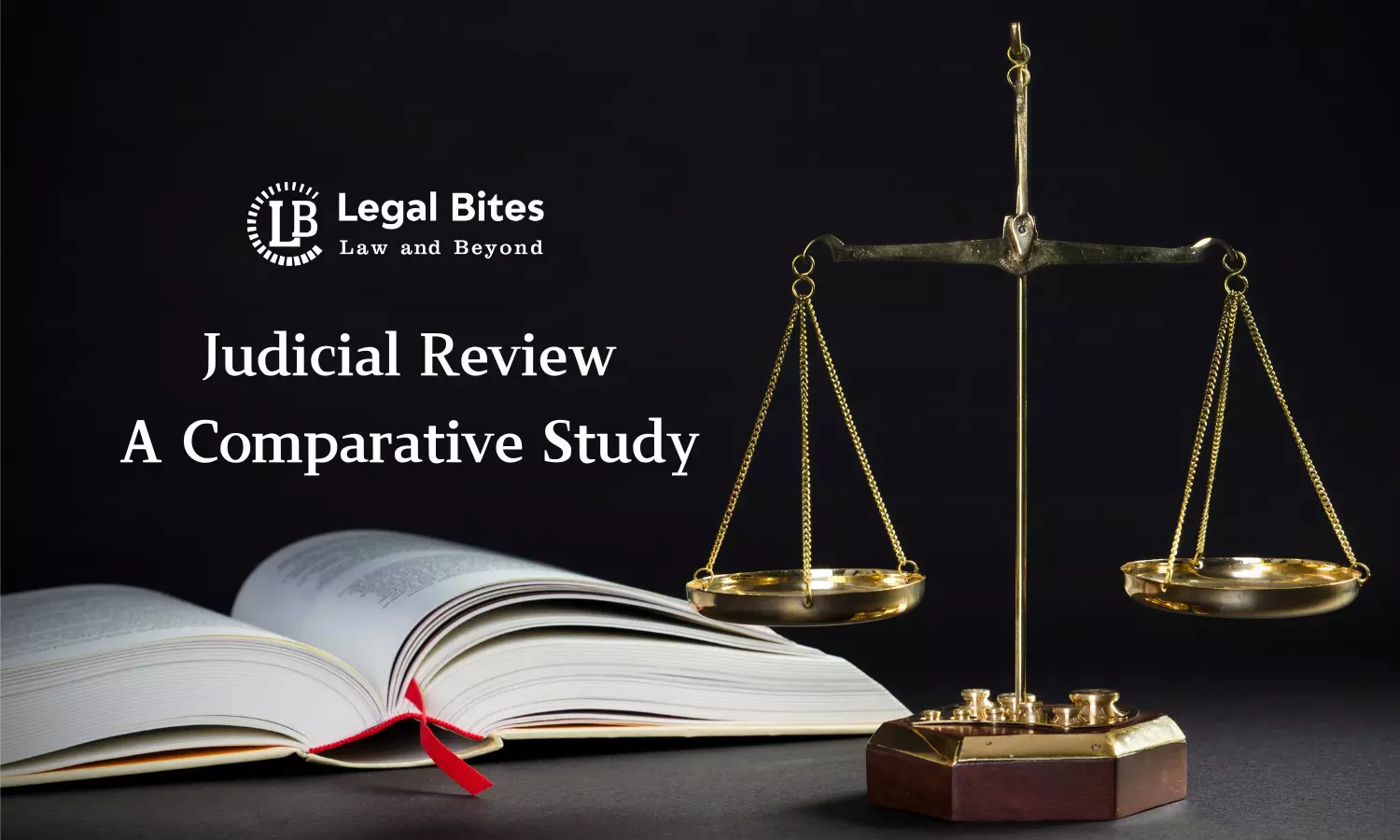Judicial Review: A Comparative Study
Judicial review is a vital tool for upholding constitutionalism and protecting individual rights.

A nuanced approach balancing judicial activism and restraint is essential for fostering democratic governance and maintaining public trust in judicial institutions.IntroductionJudicial review is a fundamental principle that empowers the judiciary to evaluate the constitutionality of legislative and executive actions. It ensures that the rule of law prevails by keeping governmental powers in check. Originating in the United States, the doctrine of judicial review has been adopted and adapted...
A nuanced approach balancing judicial activism and restraint is essential for fostering democratic governance and maintaining public trust in judicial institutions.
Introduction
Judicial review is a fundamental principle that empowers the judiciary to evaluate the constitutionality of legislative and executive actions. It ensures that the rule of law prevails by keeping governmental powers in check. Originating in the United States, the doctrine of judicial review has been adopted and adapted by various countries, each with unique constitutional frameworks and interpretations. This article examines the concept of judicial review, its evolution, and its comparative application in different constitutional systems.
Concept and Evolution of Judicial Review
Judicial review refers to the judiciary's authority to invalidate laws, policies, and actions that violate constitutional provisions. It acts as a mechanism for safeguarding constitutional supremacy, individual rights, and the separation of powers.
Historical Context
United States: The concept of judicial review was formally established in the landmark case of Marbury v. Madison (1803). Chief Justice John Marshall articulated that "a law repugnant to the Constitution is void," laying the foundation for judicial review as a cornerstone of constitutional governance.
United Kingdom: Unlike the codified systems, the UK follows parliamentary sovereignty. However, judicial review has evolved under common law and human rights legislation like the Human Rights Act, 1998.
India: The framers of the Indian Constitution adopted judicial review as an integral feature, as evidenced by Articles 13, 32, and 226, which empower courts to ensure that laws and executive actions adhere to constitutional mandates.
Judicial Review in the United States
Features:
- Judicial review is rooted in constitutional supremacy and federalism.
- It is broad in scope, allowing both state and federal actions to be challenged.
- The doctrine of "strict scrutiny" is applied in cases involving fundamental rights.
Key Cases:
- Marbury v. Madison (1803): Established the judiciary's role as the arbiter of constitutional interpretation.
- Brown v. Board of Education (1954): Declared racial segregation in public schools unconstitutional, showcasing the judiciary's role in upholding civil rights.
- Roe v. Wade (1973): Highlighted the judiciary's role in protecting individual rights against state intrusion.
Criticism
- Judicial activism and overreach are often criticized for encroaching on legislative powers.
- Decisions based on broad interpretations of the Constitution can lead to politicization of the judiciary.
Judicial Review in the United Kingdom
Features:
- Rooted in common law, judicial review in the UK focuses on administrative actions rather than constitutional validity, as the UK lacks a written constitution.
- The Human Rights Act, 1998, allows courts to assess compatibility with the European Convention on Human Rights (ECHR).
Key Developments:
- R (Miller) v. Secretary of State for Exiting the European Union (2017): Highlighted the judiciary's role in ensuring adherence to constitutional principles during Brexit.
- A v. Secretary of State for the Home Department (2004): Struck down indefinite detention provisions under anti-terrorism laws as incompatible with the ECHR.
Criticism
- Critics argue that judicial review undermines parliamentary sovereignty.
- The limited scope of judicial review compared to codified systems restricts its effectiveness.
Judicial Review in India
Features:
- Judicial review is an integral part of the Constitution, explicitly enshrined in Articles 13, 32, and 226.
- It includes the review of both legislative and executive actions.
Key Cases:
- Kesavananda Bharati v. State of Kerala (1973): Established the doctrine of the "basic structure," limiting Parliament's power to amend the Constitution.
- Maneka Gandhi v. Union of India (1978): Expanded the interpretation of fundamental rights, emphasizing the due process of law.
- Minerva Mills v. Union of India (1980): Reiterated the balance between fundamental rights and directive principles.
Criticism:
- Judicial activism is sometimes seen as encroaching on the domain of the legislature.
- The slow pace of judicial processes affects the timely delivery of justice.
Comparative Analysis
Scope and Powers:
- United States: Judicial review applies broadly to both federal and state actions, emphasizing individual rights.
- United Kingdom: Focuses on procedural fairness and compatibility with human rights rather than constitutional validity.
- India: Strikes a balance between the principles of constitutional supremacy and parliamentary sovereignty.
Role in Separation of Powers:
- The U.S. system emphasizes checks and balances, with the judiciary playing a pivotal role.
- In the UK, parliamentary sovereignty limits judicial intervention.
- In India, judicial review ensures adherence to the Constitution while maintaining a balance between the legislature, executive, and judiciary.
Approach to Fundamental Rights:
- The U.S. applies strict scrutiny, often leading to landmark judgments on civil liberties.
- The UK emphasizes proportionality under the Human Rights Act.
- India adopts a progressive interpretation, expanding the ambit of rights over time.
Challenges to Judicial Review
1. Judicial Activism vs. Restraint:
Excessive judicial activism can lead to accusations of overreach, undermining the doctrine of separation of powers.
Conversely, judicial restraint may render the judiciary ineffective in addressing constitutional violations.
2. Political Influences:
In politically polarized systems, judicial decisions are often viewed through partisan lenses, affecting public trust.
3. Implementation Issues:
Courts may face challenges in enforcing judgments, especially in developing countries like India.
Conclusion and Way Forward
Judicial review is a cornerstone of constitutional governance, ensuring the supremacy of the Constitution and protecting individual rights. While the United States, the United Kingdom, and India share common objectives, their approaches to judicial review reflect their unique legal and constitutional frameworks. Understanding these differences enhances the global discourse on judicial independence and accountability. The comparative study underscores the evolving nature of judicial review as a dynamic mechanism tailored to address the specific needs of diverse legal systems.
References
[1] Marbury v. Madison, 5 U.S. (1 Cranch) 137 (1803).
[2] Kesavananda Bharati v. State of Kerala, AIR 1973 SC 1461.
[3] R (Miller) v. Secretary of State for Exiting the European Union, [2017] UKSC 5.
[4] Durga Das Basu, Introduction to the Constitution of India (LexisNexis), 23rd Edition.
[6] Human Rights Act, 1998 (UK).
[7] M.P. Jain, Indian Constitutional Law (LexisNexis), 8th Edition.
Important Link

Apurva Neel
I am a Research Associate and Editor at Legal Bites with an LL.M. specialization in Corporate and Commercial Laws from Amity University, Mumbai. I have put my best efforts into presenting socio-legal aspects of society through various seminars, conferences etc. I keep refining content as I am an ardent writer, and palpably law has got multi-dimensional aspect, so I passionately try to explore ahead.
